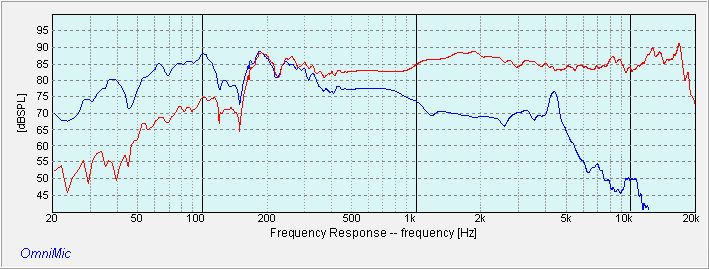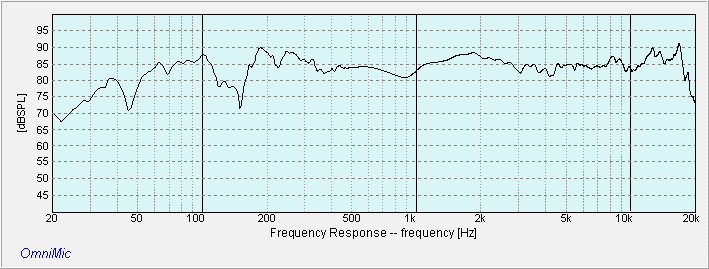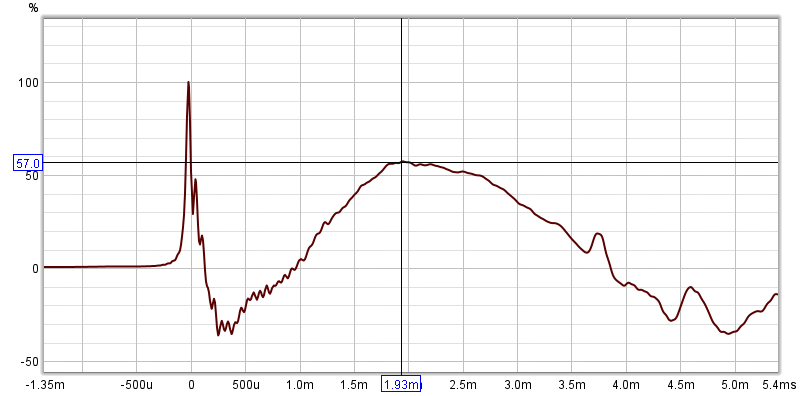|
I am a fan of active crossovers but there are times when a less complicated and cheaper solution may work better. With this Flycatcher-II, can I do away with the biamping and active crossover and use a single inductor for the GF180-4 instead? I rummaged through my collection of inductors and found a 5.6mH. I thought to myself “Maybe this will work”. I soldered it to the GF180-4 for a 1st order low pass filter and I was stunned by the music. I’m on to something here.
The FR plot above is the GF180-4 with the 5.6mH in series. It looks like the corner frequency is about 200Hz~300Hz. That’s close to the 200Hz I used in the active version.
The Red plot is the HiVi C3N-III in a 1.5 liters sealed box. I did not use a capacitor to roll-off the bass because the sealed box has a natural high pass.
The Black plot is the FR of the Flycatcher-II with only a 5.6mH for the GF180-4. Compare this to the BiAmp Active version below, there’s not much of a difference.
Sound of Passive Flycatcher-II As I mentioned earlier, I was quite taken aback when I first heard the Passive Flycatcher-II. She actually sounds better than the Active BiAmp version. The timing of the bass is more in line with the rest of the music. Could my ears be playing tricks on me? That was when I decided to measure the Step response.
The Step of the passive Flycatcher-II is quite impressive. The first peak is the HiVi C3N-III. The second peak is the GF180-4 at 621microsec. That’s roughly half a msec. When I measured the active Flycatcher-II (below), I nearly fainted. The GF180-4 is at 1.93 msec. That’s almost 4x slower. No wonder the music sounded a bit disconnected. The bass was delayed in the active Flycatcher-II.
This just goes to show the importance of using our ears. Technically, a 24dB/oct with an electronic crossover is superior to a 1st order with a single inductor but as in all things in audio, things are sometimes not so straight-forward. What I completely overlooked is the delay created in a 4th order network. And as it turned out, it’s audible in the bass region. This discovery opens up new avenues. Maybe I should explore 3-way designs using 1st order filter for the bass woofer instead of relying on electronic crossovers. Something to think about.
This is how simple the Flycatcher-II is. All that’s needed is a 5.6mH inductor for the GF180-4. It seems that this inductor is no longer available at Part Express. You can use a 5.5mH instead. There’s no meaningful difference. Unless otherwise stated, all measurements were made in Full Space. Mic at 36 ins, tweeter axis. Impulse Window=5ms. No smoothing applied. |

November 29, 2023HIFI DRIVERS, Projects






